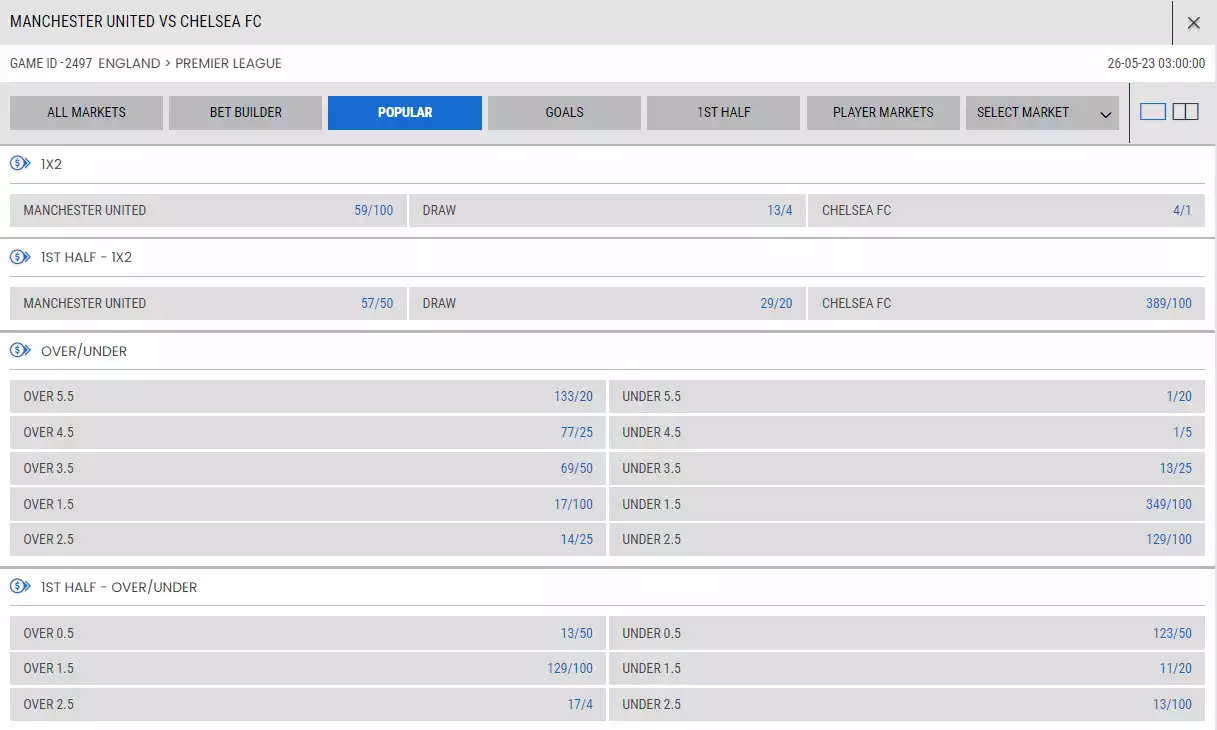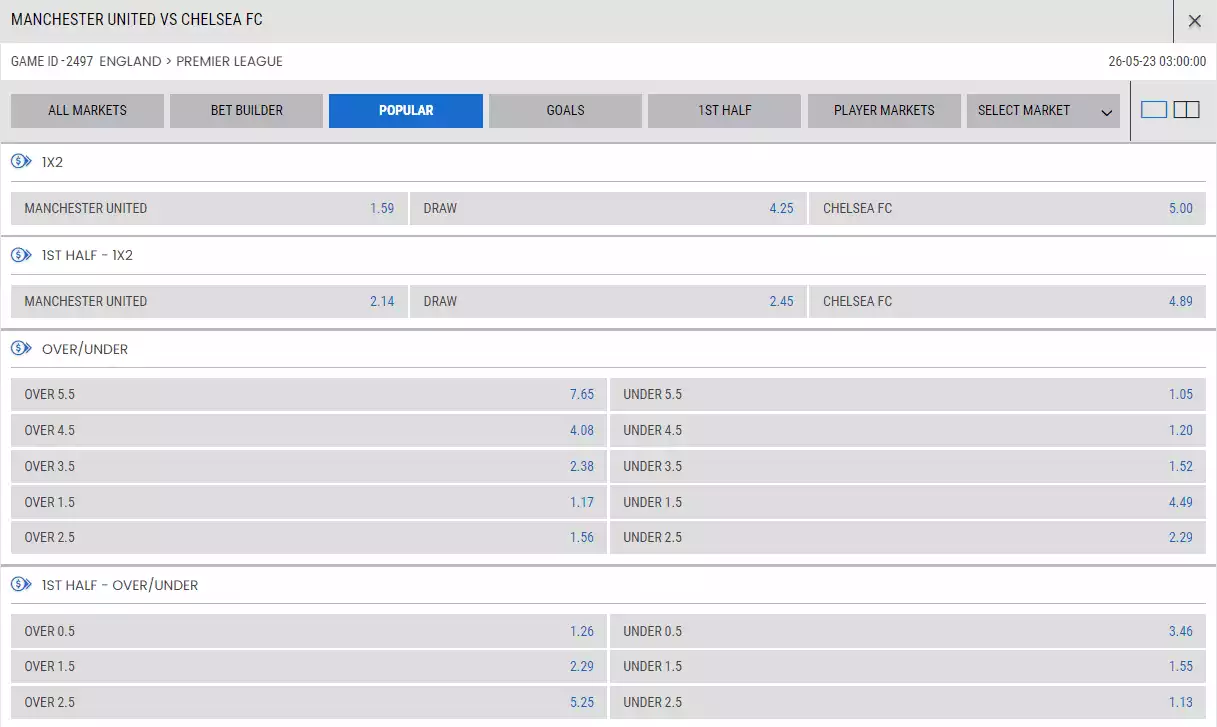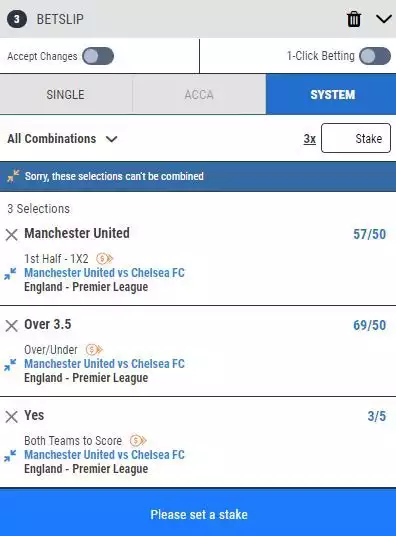You have heard of online sports betting, but how exactly do betting sites work?
Here, we provide you with everything you need to know about how odds are set, how to place bets, and where to get value.
By the end, you'll have the knowledge and confidence to step into the world of sports betting and make informed decisions. Read on to discover more.
What Are Betting Sites?
Betting sites are online platforms where players can place bets on various sports events. These sites provide a convenient way to place bets, offering a wide range of markets, competitive odds, and secure transactions.
In saying that, you should do some research on where to play before registering. By playing at the best betting sites you will have a safe and more enjoyable experience.
How Betting Odds Are Set
Bookmakers and Traders
Behind the scenes, bookmakers employ skilled traders or odds compilers who are responsible for setting the initial odds. These professionals analyse a range of factors to assess the likelihood of different outcomes. They consider historical data, team/player form, injuries, and market trends.
Of course, a margin is worked in to minimise the risk to the bookmaker, this is known as the overround. The best way to explain this is with an example.
Arsenal to win - 1/1
Draw - 2/1
Everton to win 3/1
Here we are looking at three possibilities, to understand the overround we look at the implied probability percentage of each outcome. This is a simple calculation which requires us to translate the fractional odds into decimals and then express them as a percentage.
Arsenal 1/1: 2.0 as a decimal and 50% probability
Draw 2/1: 3.0 as a decimal and 33.33% probability
Everton 3/1: 4.0 as a decimal and 25% probability
In an ideal world, these would all add up to 100%, however, as you can see the total is 108.33%. The additional 8.33% is the overround which represents the bookies' margin to ensure they are profitable in the long run.
A good rule of thumb is 2 - 2.5% overround per outcome, meaning our example is not the most generous. It is not something that you need to give too much consideration to, as you can compare odds easily to see if they are competitive. However, it is always good to know why the odds are what they are.

Fractional Odds On Display
*This image was taken from Mr Play Sports
Market Factors
As the market starts to react to the initial odds, bookmakers also take into account market factors. These factors include the volume of bets placed and the balance of bets on each outcome. If a significant amount of money is wagered on a particular outcome, bookmakers may adjust the odds to manage their potential liabilities, this is often referred to as risk management.
Additionally, breaking news or developments related to the event can also impact the odds.
Competitive Odds
In a competitive betting market, bookmakers not only focus on setting their own odds but also consider the odds offered by their competitors. They aim to remain competitive and attract bettors by offering odds that are in line with or more favourable than those of their rivals.
This healthy competition between bookmakers benefits bettors, as it leads to better odds and more choices.
UK Betting Odds Explained
In the UK, fractional odds are the traditional format used by bookmakers. These odds are represented as fractions, such as 2/1 or 5/2. The numerator represents the potential profit you can make, while the denominator represents the stake or amount you need to wager. For example, with 2/1 odds, a £10 bet would yield a £20 profit (plus your £10 stake) if the bet is successful.
What About Decimal Odds?
While fractional odds are traditional in the UK, younger bettors seem to favour the simplicity of the European style of decimal odds. And to be fair, they are more straightforward, especially when it comes to figuring out your total return. If we take the 2/1 example above, this is expressed as 3.0 in decimal. If you place a £10 bet you simply need to do £10 x 3.0 to calculate your winnings.

Decimal Odds On Display
*This image was taken from Mr Play Sports
Who To Bet On?
Odds not only indicate the potential payout but also reflect the perceived likelihood of an outcome. Lower odds are assigned to the favourite, indicating a higher probability of that outcome occurring. Higher odds are given to the underdog, representing a lower probability.
This differentiation allows you to evaluate the risk and potential reward associated with each betting option. Bear in mind that nothing in sports betting is guaranteed and even very low odds do not mean you will get your money back.
How To Place Bets Online
Now that you understand the odds, you can place your bets. It should be a simple process.
- Navigate to the sport you want to bet on
- Look at the different markets
- Make your selection and add it to your betslip
- Enter how much you would like to stake
- Press place bet

Betslip Example
*This image was taken from Mr Play Sports
Each-Way Betting
Each-way betting is a popular option in the UK, particularly in horse racing and golf. It allows you to place a bet on both the win and the place (finishing in the top positions) of an event.
When betting each-way, your total stake is divided equally between the two parts of the bet. If your selection wins, you receive payouts for both the win and the place. If your selection only places, you receive a payout for the place only.
Each-way betting offers a form of insurance by increasing your chances of winning or receiving a return even if your selection doesn't come first. However, it is important to note that each-way terms can vary between events and bookmakers, so it's essential to understand the specific rules and payout structures for each bet.
Conclusion
By understanding how betting odds are set and the different formats used, such as fractional odds and decimals, you can make more informed decisions when placing bets.
Knowing how to interpret and calculate odds can boost your betting experience, but at the end of the day it all comes down to chance so bet responsibly.








